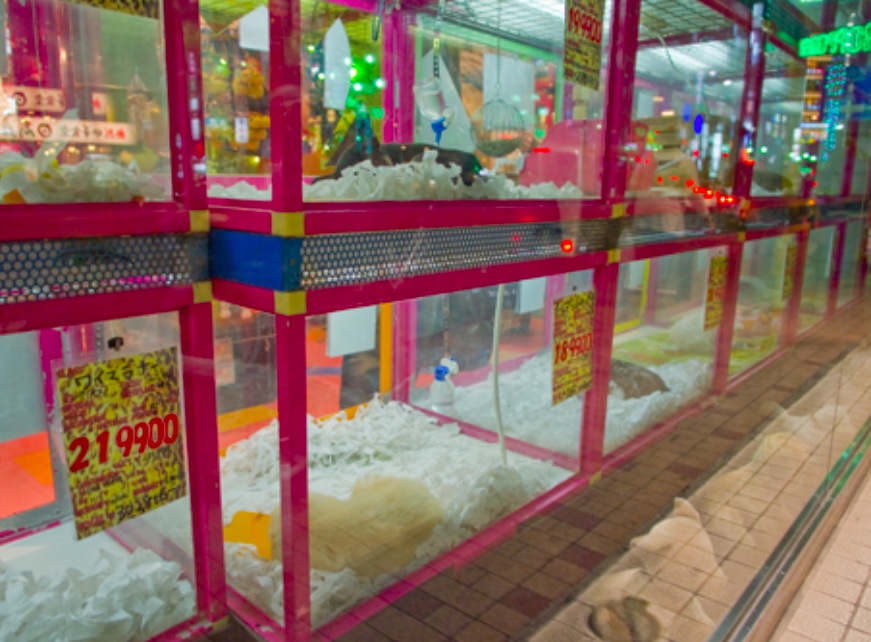Pet stores, where dogs and cats in cages are sold, exist everywhere in Japan, including home centres and shopping malls.
Pet stores, where cute puppies and kittens can be easily purchased, are based on a system of mass production of life in order to provide a stable supply of animals as products.
Pet stores exist side by side with realities that make us want to turn our eyes away, such as the treatment of unsold animals, the environment in which dogs and cats are kept for breeding, and the abandonment of pets as a result of easy pet purchases.
On the other hand, in Europe and in the United States, regulations concerning the sale of living creatures are progressing, and pet stores are disappearing from the streets.
In this article, we will introduce the problems faced by pet stores in Japan and the global trend regarding pet stores as well as considering how we can create a society in which people can live in harmony with animals.
Reasons Why Pet Shops are Chosen
Many people who want to own a dog or cat in Japan may first consider purchasing one from a pet store.
According to the National Survey on Dog and Cat Ownership by the Pet Food Association of Japan, the percentage of people who purchased their pets at pet stores is 51% for dogs and 16% for cats.
According to this data, many people who own cats have sheltered stray cats or given them away by friends or acquaintances, but when it comes to dogs, more than half of the respondents purchased their pets from pet stores.
There are reasons why pet stores are widely used in Japan, despite the fact that there are other options available.
First of all, pet stores are located in various places where people can casually drop by and “impulse buy” is possible, even for dogs and cats.
Since most pet shops sell only cute puppies and kittens less than three months old, you may be tempted to buy them.
If you want a popular breed of dog or cat, which has sparked the recent pet boom, a pet store that offers a variety of breeds is also likely to be the best choice. And, unlike a transfer from a shelter, there is no question of owner qualifications, family structure, or breeding environment when purchasing a pet from a pet store.
Although pet stores are expensive, they can be easily purchased by anyone, and the fact that so many people use them is the reason for the large number of pet stores in Japan.
Problems faced by pet stores
Some people may think that there is no major problem with pet stores as long as pet owners are responsible for keeping their pets. However, pet stores have a problem in that they tend to produce dogs and cats that are disposed of.
Pet stores purchase animals bred by breeders through auctions or wholesalers and sell them.
What supports the pet store business is the mass production and mass consumption of life, where new dogs and cats are supplied immediately to the cages vacated after someone purchases a pet.
In pet stores, the “best time to sell” is when the pets are young, between two and three months old, and if they grow any older, they are left unsold. Although it is prohibited by law to take unsold dogs and cats to public health centers, the reality is that there are many uncertainties regarding the treatment of unsold animals.
Dogs and cats used for breeding for pet stores are often kept in poor conditions, and in some cases, they are abandoned once they have fulfilled their roles.
Furthermore, they are transported while their bodies are still immature, and sometimes die during the distribution process.
Pet stores, where pets can be bought impulsively, are also responsible for the increase in abandoned dogs and cats.
In addition to allergies and economic reasons for giving up pets, problematic behaviors such as biting and meowing are often the reasons for giving up pets.
This is often caused by the lack of socialization due to being separated from their parents shortly after birth.
Allergies and financial burdens are also problems that are caused by easy pet purchases.
Efforts to Ensure Harmonious Coexistence with Animals
In order to achieve a society in which humans and animals can coexist in harmony, it is necessary to reduce the number of dogs and cats kept in inappropriate environments and the number of abandoned pets.
In response to overseas trends and growing animal welfare in Japan, Japan is also moving forward with legal restrictions on pets.
Starting in June 2021, the handing over and exhibition of dogs and cats within 8 weeks of birth has been regulated.
By staying with their parents for as long as possible, they learn social skills and are less likely to develop problematic behavior.
Furthermore, from June 2022, a microchip registration system will begin for dogs and cats sold by breeders and pet stores.
Installation of a microchip will basically be mandatory for breeders, while it will be an effort requirement for those who already own pets.
The microchip system is expected to prevent the abandonment of pets and ensure the proper handling of dogs and cats left unsold at pet stores.
In Japan, the number of cats and dogs being killed at public health centers is decreasing due to the cooperation of local governments and volunteers.
Although the number is decreasing, there will still be approximately 20,000 dogs and cats killed by 2020.
And although the number of dogs and cats killed at public health centers itself is decreasing, there are still some problems that are not included in the statistics, such as the fact that it is unclear what happens to unsold dogs and cats at pet stores.
Pet stores face various problems that are difficult for us, as consumers, to see.
Living with pets brings happiness to our lives, but the responsibility of taking care of their lives is very heavy.
It is necessary to make a calm decision based on your living environment, life plan, and financial situation as to whether you can keep your pet in a comfortable and appropriate environment with love until it ends its life.




Comments